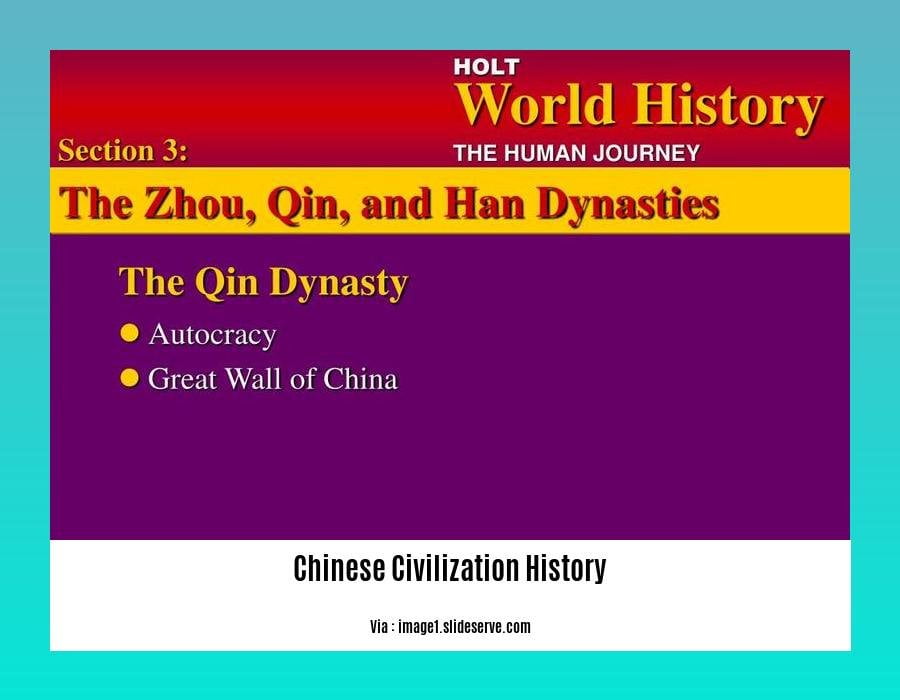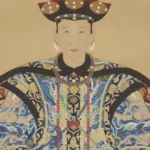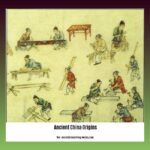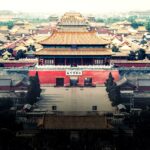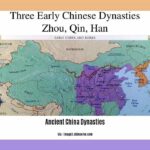Embark on a captivating journey through time as we delve into The Enigmatic History of Chinese Civilization: Unveiling the Tapestry of the Past. Join us on this extraordinary exploration as we unravel the intricate layers of China’s rich and storied legacy, from its ancient origins to its profound impact on the modern world.
Key Takeaways:
- Chinese civilization originated in the Yellow River region.
- The Shang Dynasty (1766 BCE) was the first historic dynasty.
- The Qin Shi Huang unified China in 221 BCE, establishing the first unified empire.
- Chinese civilization made significant contributions to philosophy, art, science, and technology.
- The Xinhai Revolution in 1911 ended the Qing Dynasty.
- The People’s Republic of China was established in 1949.
Chinese Civilization History
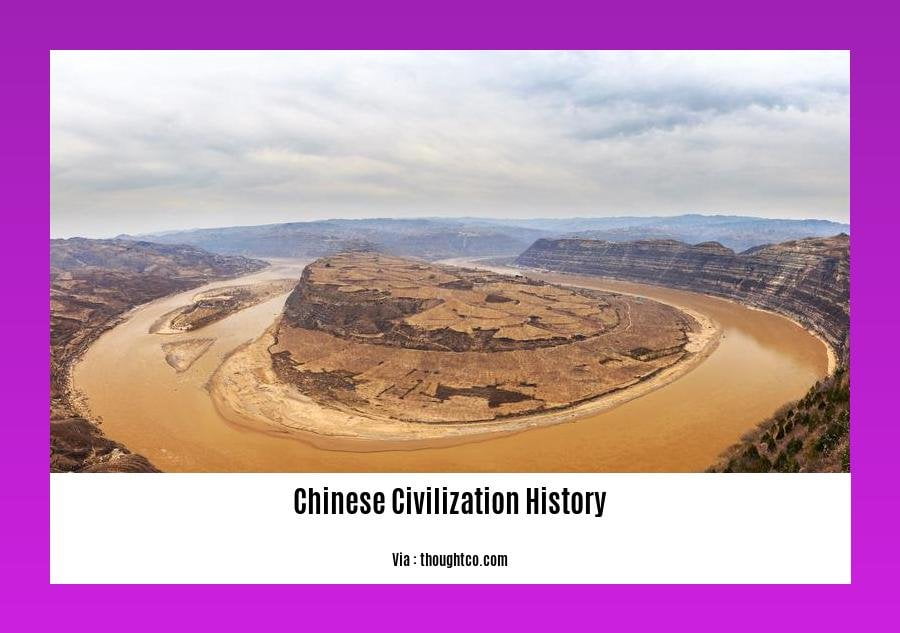
In Chinese civilization history, uncover a land teeming with historical wonders and enduring legacies. Its roots stretch back to prehistoric times, weaving a tapestry of dynasties, philosophies, and advancements.
Precursors of Civilization
Chinese civilization history traces its origins to the Yellow River valley. Neolithic settlements thrived, laying the groundwork for the first dynasties.
Dynastic Splendor
The Shang Dynasty (1766 BCE) marked the beginning of recorded Chinese civilization history. Their rule ushered in advances in bronze casting and a stratified social structure. The Western Zhou Dynasty (1122 BCE) succeeded them, introducing a feudal system and codifying rituals.
Flourishing of Ancient China
Chinese civilization history witnessed an explosion of cultural and intellectual achievement. The Qin Dynasty (221 BCE) unified China for the first time, while the Han Dynasty (206 BCE – 220 CE) flourished, marked by technological innovations, Confucianism, and the expansion of the Silk Road.
The Qing Dynasty and Modernization
The Qing Dynasty (1644 – 1911) left an enduring mark on Chinese civilization history. It was a time of economic prosperity, territorial expansion, and encounters with the West. The Xinhai Revolution (1911) ended imperial rule, paving the way for the establishment of the Republic of China.
The People’s Republic
The People’s Republic of China (PRC) emerged in 1949, transforming Chinese civilization history. Economic reforms, political changes, and technological advancements have shaped the nation. Today, China stands as a global powerhouse, its ancient legacy entwined with its modern aspirations.
Embark on a journey through time and explore the history of ancient China, a land steeped in rich traditions and groundbreaking achievements. From the rise and fall of ancient Chinese dynasties to the mind-boggling inventions that shaped the world, there’s much to discover.
Medieval China: The Yuan, Ming, and Qing Dynasties
Let’s delve into the tapestry of Medieval China: The Yuan, Ming, and Qing Dynasties, a pivotal period that shaped China’s destiny.
The fall of the Han dynasty in 220 CE ushered in centuries of upheaval and transition, characterized by the rise and fall of numerous dynasties. The Yuan Dynasty (1279-1368) marked a unique era of Mongol rule, introducing new cultural influences and expanding the Chinese empire.
Next, the Ming Dynasty (1368-1644) witnessed a resurgence of Chinese culture and prosperity. From the technological advancements in shipbuilding to the flourishing of art and literature, this period was a testament to China’s enduring resilience.
Finally, the Qing Dynasty (1644-1912) emerged as the last imperial dynasty of China. During this time, the empire reached its territorial peak, extending to include modern-day Tibet, Mongolia, and Xinjiang. However, it also faced challenges from Western powers, leading to a period of both opportunity and turmoil.
Key Takeaways:
- The Yuan, Ming, and Qing Dynasties were pivotal in shaping the political, economic, and cultural landscape of medieval China.
- The Yuan Dynasty introduced Mongol influence and expanded the Chinese empire.
- The Ming Dynasty witnessed a revival of Chinese culture, technological advancements, and economic prosperity.
- The Qing Dynasty saw China reach its territorial peak but also faced challenges from Western powers.
Relevant URL Source:
Modern China: From the Opium Wars to the Republic
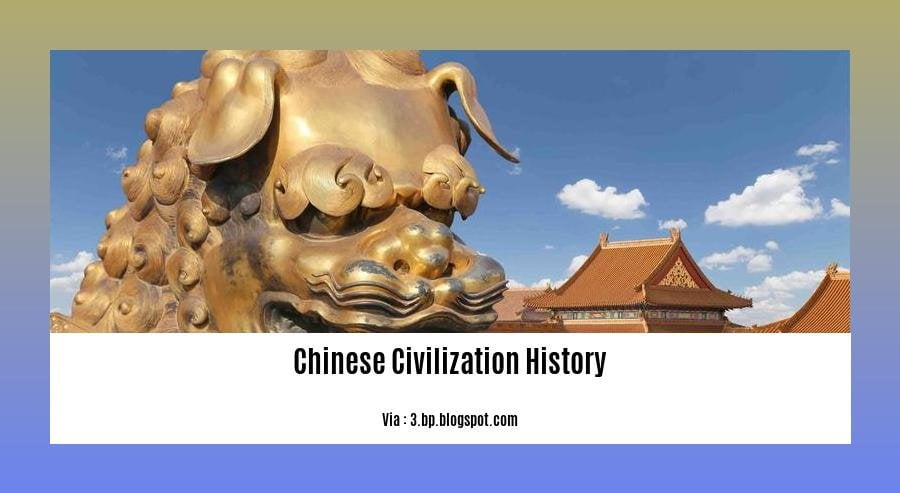
Prepare to delve into a pivotal epoch in Chinese history that set the stage for the nation’s rise to prominence on the global stage. Modern China: From the Opium Wars to the Republic marks a transformative period characterized by conflict, foreign influence, and internal strife, ultimately culminating in the birth of a new era.
Causes of the Opium Wars
The roots of the Opium Wars lie in a trade imbalance between China and Britain, fueled by China’s insatiable demand for tea. British merchants sought to rectify this deficit by introducing opium into the Chinese market, leading to widespread addiction and societal decay. China’s unsuccessful attempts to suppress the opium trade ignited the First Opium War in 1839.
Major Events
First Opium War (1839-1842): Britain’s military superiority forced China to sign the Treaty of Nanjing, granting extraterritorial rights to foreigners, opening ports to trade, and ceding Hong Kong to Britain.
Taiping Rebellion (1850-1864): A widespread civil war led by a charismatic leader challenging the Qing Dynasty. The rebellion’s suppression weakened the dynasty and further exposed its vulnerability.
Second Opium War (1856-1860): Western powers, including Britain, France, and Russia, intervened to protect their commercial interests, resulting in another humiliating defeat for China. The Treaty of Tianjin and the Convention of Peking expanded foreign influence and concessions.
Consequences
Weakening of the Qing Dynasty: The Opium Wars highlighted the Qing Dynasty’s inability to resist foreign aggression, leading to its gradual decline and eventual collapse.
Rise of Nationalism: The wars fostered a sense of national humiliation and resentment among the Chinese people, sparking a desire for self-determination and modernization.
Emergence of Western Influence: China’s defeat opened the door to Western political, economic, and cultural influence, transforming the country’s social and ideological landscape.
Key Takeaways:
- The Opium Wars were caused by a trade imbalance and China’s failed attempt to suppress the opium trade.
- The wars resulted in humiliating treaties that ceded territory, granted extraterritorial rights, and opened ports to foreign trade.
- The Qing Dynasty was weakened by the wars and internal strife, leading to its eventual collapse.
- The Opium Wars sparked a rise in nationalism and a desire for modernization among the Chinese people.
- Western influence significantly impacted China’s political, economic, and social development during this period.
Citation:
* Opium Wars | Causes & Effects | Britannica
Contemporary China: Challenges and Prospects
China’s path through the 20th century has been marked by both progress and turmoil. Since the founding of the People’s Republic in 1949, China has emerged as a global economic powerhouse, lifted millions out of poverty, and played an increasingly influential role in international affairs. However, China also faces a number of challenges, including environmental degradation, social inequality, and political repression.
Challenges
Environmental Degradation: China’s rapid economic growth has come at a high environmental cost. The country is the world’s largest emitter of greenhouse gases, and its cities are among the most polluted in the world. China is also facing a water crisis, with many of its rivers and lakes becoming polluted or depleted.
Social Inequality: China’s economic growth has not been evenly distributed, and there is a growing gap between the rich and the poor. The country also faces a number of social problems, including poverty, unemployment, and corruption.
Political Repression: China is a one-party state, and the government has a long history of suppressing dissent. In recent years, the government has cracked down on human rights lawyers, journalists, and activists.
Prospects
Despite these challenges, China’s future prospects are bright. The country has a large and growing middle class, a well-educated workforce, and a strong entrepreneurial spirit. China is also investing heavily in new technologies, such as artificial intelligence and renewable energy.
If China can address its challenges, it has the potential to become a global leader in the 21st century. The country has a long history of innovation and adaptability, and it is well-positioned to overcome the challenges it faces.
Key Takeaways:
- China has emerged as a global economic powerhouse, but it faces a number of challenges, including environmental degradation, social inequality, and political repression.
- China’s future prospects are bright, but it will need to address its challenges in order to achieve its full potential.
- China is a country with a long history of innovation and adaptability, and it is well-positioned to overcome the challenges it faces.
Most Relevant URL Source
The Political Development of Contemporary China from the Perspective of Historical Political Science
FAQ
Q1: What is the significance of the Yellow River region in Chinese history?
Q2: How did the Tang dynasty contribute to Chinese civilization’s golden age?
Q3: What were the major causes of the Opium Wars?
Q4: How did the Xinhai Revolution impact China’s political landscape?
Q5: What is the role of the constitutional structure in China’s contemporary development?
- China II Review: Delicious Food & Speedy Service - April 17, 2025
- Understand Virginia’s Flag: History & Debate - April 17, 2025
- Explore Long Island’s Map: Unique Regions & Insights - April 17, 2025
